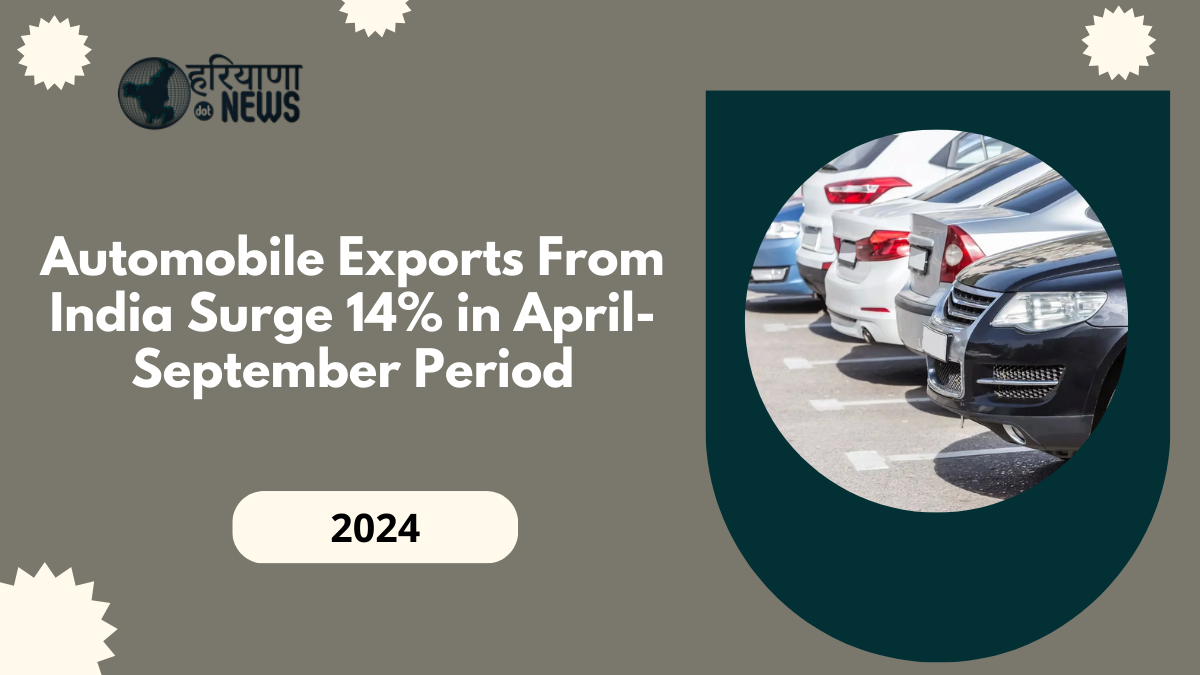India’s automobile exports significantly rose in the first half of the current fiscal year, recording a 14% increase compared to the same period last year. This growth was driven primarily by increased shipments of two-wheelers and passenger vehicles. Data from the Society of Indian Automobile Manufacturers (SIAM) reveals that total exports between April and September reached 25,28,248 units, up from 22,11,457 units during the same period in the previous fiscal year.
Growth in Two-Wheeler Exports
Two-wheeler exports were a significant contributor to this growth. Shipments of scooters surged by 19%, reaching 3,14,533 units, while motorcycle exports rose by 16%, totalling 16,41,804 units. This 16% increase in two-wheeler exports represents a significant rise from 16,85,907 units in the same period last year.
Rebound in Key Export Markets
The rebound in automobile exports can largely be attributed to the recovery of critical markets, particularly in Latin America and Africa. SIAM President Shailesh Chandra explained that these regions had previously faced economic challenges, which led to a slowdown in exports. Issues such as currency devaluation in some African nations have forced these countries to prioritize essential imports over vehicle imports. However, the situation has since improved, and these markets have again begun importing vehicles at higher rates.
Decline in FY24 Automobile Exports
Despite this recent growth, automobile exports’ overall performance in the previous fiscal year (FY24) saw a decline. Total exports dropped by 5.5%, with 45,00,492 units exported, down from 47,61,299 units in FY23. The decline was primarily due to financial difficulties in several overseas markets, dampening vehicle demand.
Passenger Vehicle Exports Increase
Exports of passenger vehicles also contributed to the overall growth in the current fiscal year. Passenger vehicle shipments increased by 12% year-on-year between April and September, reaching 3,76,679 units. This was up from 3,36,754 units in the same period of the previous fiscal year. Maruti Suzuki, India’s largest car manufacturer, led this sector, exporting 1,47,063 units, marking a 12% rise from 1,31,546 units in the previous year. On the other hand, Hyundai Motor India experienced a slight decline in exports, with 84,900 units shipped, down 1% from 86,105 units in the year-ago period.
 Mahindra Unveils XEV 9e and BE 6e Electric SUVs in India: Features, Pricing, and Advanced Innovations
Mahindra Unveils XEV 9e and BE 6e Electric SUVs in India: Features, Pricing, and Advanced Innovations
 2024 Mercedes-Benz E-Class Long Wheelbase Launched in India: Key Features, Pricing, and Competition
2024 Mercedes-Benz E-Class Long Wheelbase Launched in India: Key Features, Pricing, and Competition
 BYD Not Opting for India’s EV Policy Benefits in the Near Future
BYD Not Opting for India’s EV Policy Benefits in the Near Future
 Mahindra Thar Roxx: The Positives and Negatives After a 10,000km Drive
Mahindra Thar Roxx: The Positives and Negatives After a 10,000km Drive




Performance of Commercial and Three-Wheeler Exports
Commercial vehicle exports also saw positive growth, with a 12% year-on-year increase in the first half of the fiscal year, totalling 35,731 units. However, not all sectors experienced growth. The export of three-wheelers declined by 1% during the April-September period, with 1,53,199 units shipped compared to 1,55,154 units in the same period of the previous fiscal year.
Conclusion
India’s automobile exports have shown a strong recovery in the first half of the current fiscal year, primarily driven by a rebound in key international markets. While two-wheelers and passenger vehicles led the charge, commercial vehicle exports also contributed to the growth. However, the decline in three-wheeler exports and the challenges faced in the previous fiscal year highlights the ongoing volatility in the global market. Nonetheless, the overall outlook for the remainder of the year appears positive as demand from recovering economies continues to rise.
Click here to know more.






